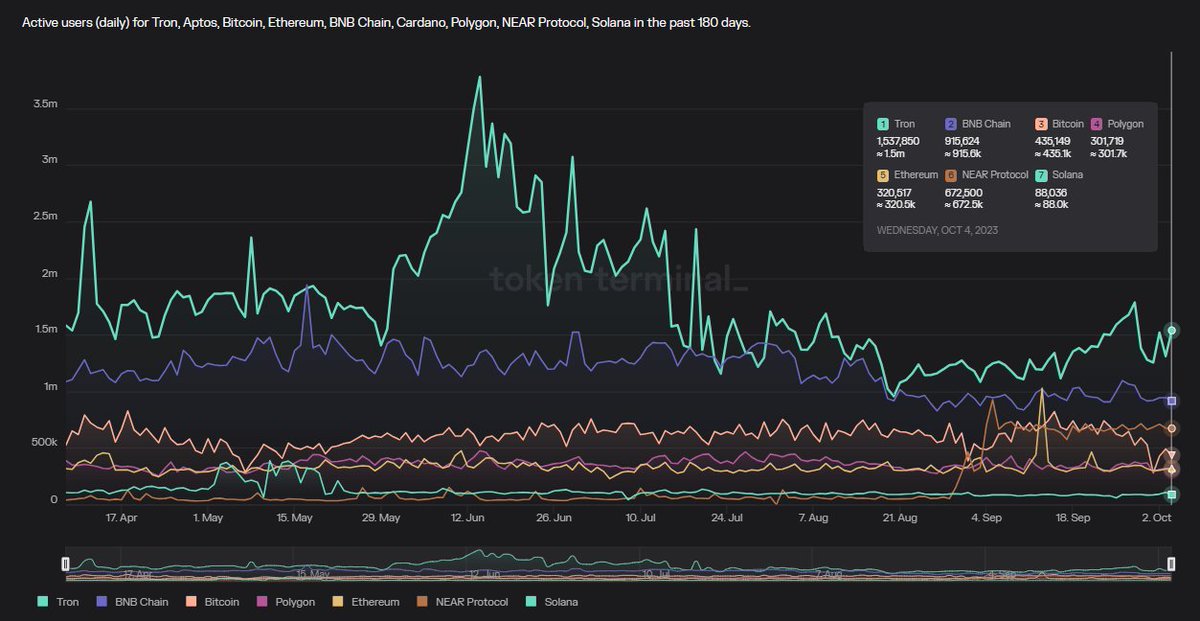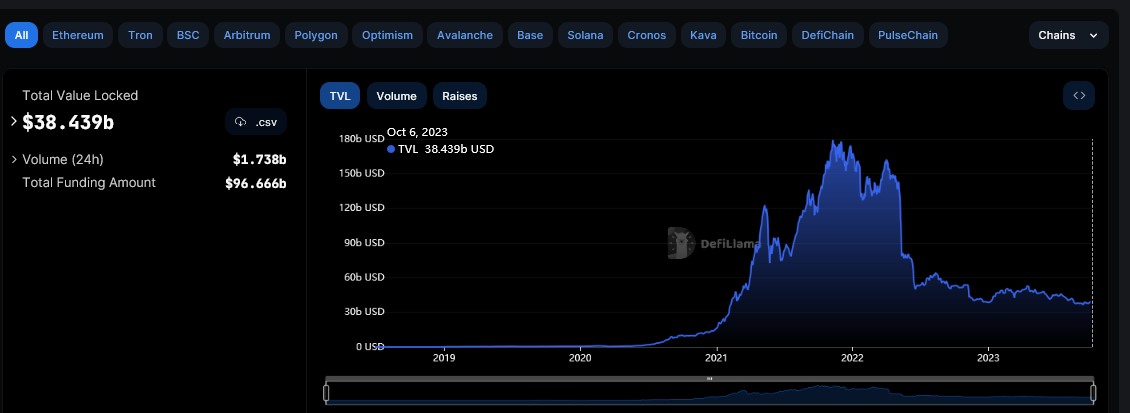Tron, a platform where users can deploy smart contracts and run decentralized applications (dapps) like they would in Ethereum, is rapidly growing its daily active addresses (DAA). DAA is the count of unique addresses that send or receive tokens on a blockchain on any given day.
Tron’s DAA Exploding, Surpasses Ethereum, Bitcoin
According to metrics shared by decentralized finance (DeFi) researcher Alex Wacy on October 6, citing Token Terminal, Tron has over 1.9 million DAA, more than twice those in the BNB Chain, which, at the time of sharing, stood at 915,000. Ethereum and Polygon had 320,000 and 301,000 trailing Bitcoin, the legacy blockchain, which had 570,000 DAA.

At this level, it is estimated that Tron is creating 200,000 new addresses daily. Other metrics also show that Tron has at least 188 million unique accounts that have generated 6.5 billion transactions.
The spike in DAA, Wacy said, could be because of Tron’s role in stablecoin transactions. Stablecoins are designed to track the value of another asset, mostly fiat currencies like the USD. The researcher said roughly $45 billion of all stablecoins are held in Tron, complying with the TRC-20 standard. Out of this, 50% of all USDT transactions are on Tron.
The surge in Tron’s DAA is noteworthy. It is when the broader cryptocurrency scene struggles with volatile asset prices and relatively low on-chain activity, especially in areas like DeFi, metaverse, non-fungible token (NFT), and blockchain.
DeFiLlama data shows that the total value locked (TVL) in DeFi, for instance, is below $40 billion, well below the $173 billion level when crypto asset prices peaked in late 2021.

Legacy Blockchains Are Still Preferred Despite Suppressed Activity
Looking at DAA alone, there is an inversion, and legacy networks, including Bitcoin and Ethereum, are trailing third-generation platforms promising cheaper transaction fees and higher throughput. From the DAA leaderboard, Tron, the BNB Chain, and NEAR Protocol are attracting new users.
Bitcoin and Ethereum’s engagement appear suppressed, looking at DAA. Though DAA can be a metric to consider when gauging how users interact with the network, Bitcoin and Ethereum are still preferred blockchains.
Bitcoin, for instance, inherently lacks smart contracts capability, but there are protocols built on it, like Rootstock, that support this feature. However, Bitcoin, due to its first-mover advantage, has found adoption. BTC is also listed in almost most exchanges and enables the daily transfer of millions, if not billions, of dollars.
This has cemented its activity and could explain why it is above Ethereum despite the latter’s activity density, especially considering fees generated from smart contracts execution and transfers. As of October 6, CryptoFees show that Ethereum generated over $2 million in fees, more than twice in Bitcoin.
Source: https://bitcoinist.com/tron-daily-active-addresses-ethereum/
